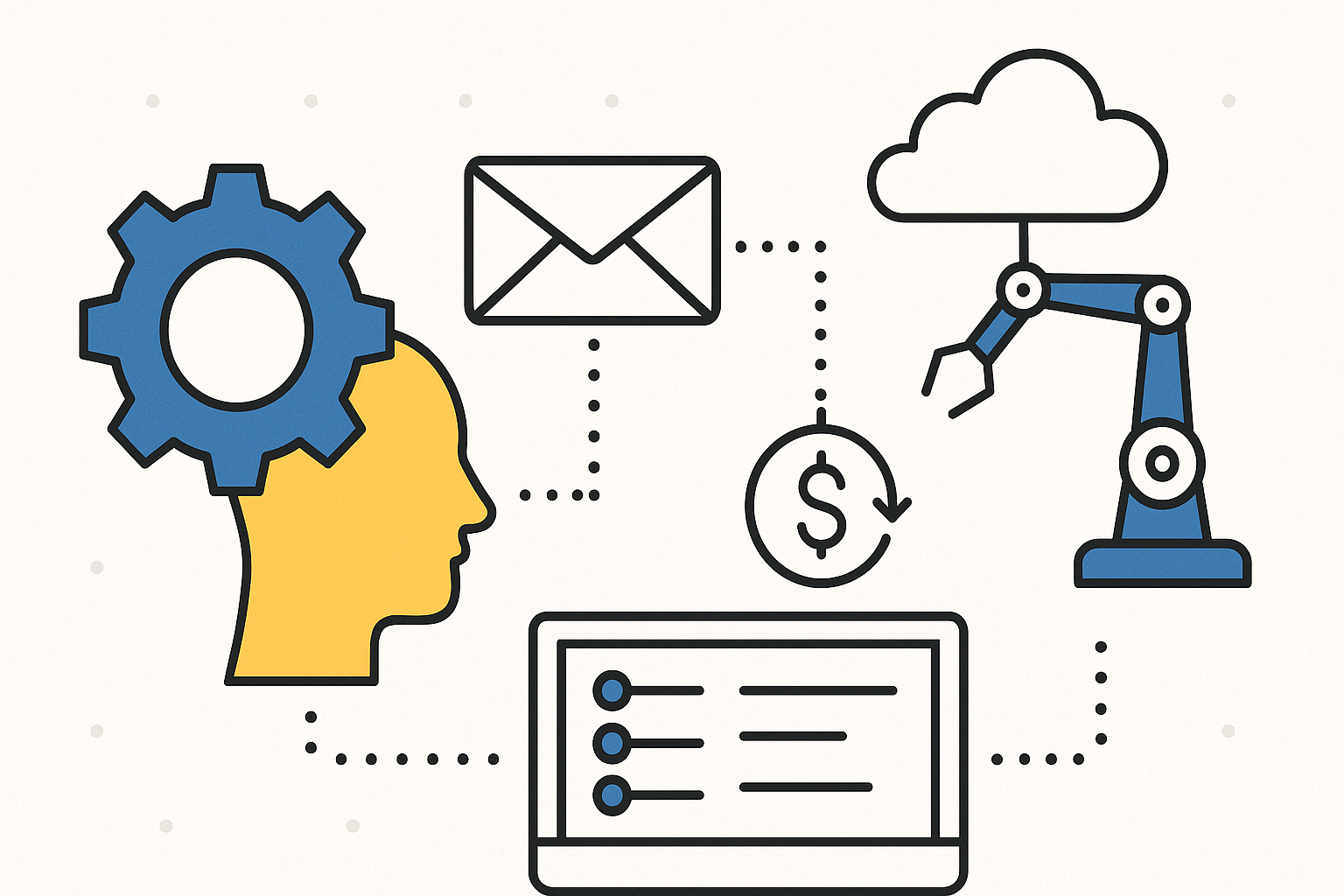The Power of Automation: Working Smarter, Not Harder

In today’s fast-paced world, automation has become more than just a tech buzzword — it’s the backbone of efficiency, consistency, and scalability. Whether you’re running a small food business, a digital agency, or a full-scale enterprise, automation can transform the way you work.
What Is Automation?
At its core, automation is the use of technology to perform repetitive tasks with minimal human intervention. It ranges from simple workflows like automatic email responses to advanced systems that integrate artificial intelligence, data analytics, and machine learning to make real-time decisions.
Why Automation Matters
- Saves Time: Tasks that once took hours can now be completed in minutes — freeing up your time to focus on growth, creativity, and innovation.
- Reduces Errors: Humans make mistakes; automated systems follow consistent rules.
- Cuts Costs: Fewer manual processes mean lower operational costs in the long run.
- Improves Scalability: Automation allows businesses to handle growth without increasing workload proportionally.
- Enhances Customer Experience: Faster response times and reliable service build stronger trust with customers.
Real-World Examples
- Email Automation: Tools like HubSpot or Mailchimp let you send personalized campaigns automatically based on user behaviour.
- Business Operations: Platforms like Zapier or Make (formerly Integromat) connect apps together so that when one action occurs — say, a form submission — another action, like data entry or notification, happens instantly.
- Manufacturing & Retail: Robots and IoT devices streamline production lines, track inventory, and even predict maintenance needs.
- Trading & Finance: Automated bots monitor markets 24/7, identify patterns, and execute trades faster than humans could ever react.
How to Get Started
- Identify Repetitive Tasks: Start by listing tasks you do daily or weekly that don’t require creative thinking.
- Choose the Right Tools: Use automation platforms compatible with your current systems — e.g., Google Workspace, Slack, or CRM software.
- Start Small: Automate one or two workflows first; test and refine before scaling.
- Monitor & Optimise: Automation isn’t “set and forget.” Regularly review performance and make adjustments.
The Future Is Automated
As technology evolves, automation will only get smarter. Artificial intelligence will personalise customer experiences, predictive analytics will guide business strategy, and interconnected systems will reduce friction between teams, departments, and customers.
The question isn’t “Should you automate?” anymore — it’s “What will you automate next?”